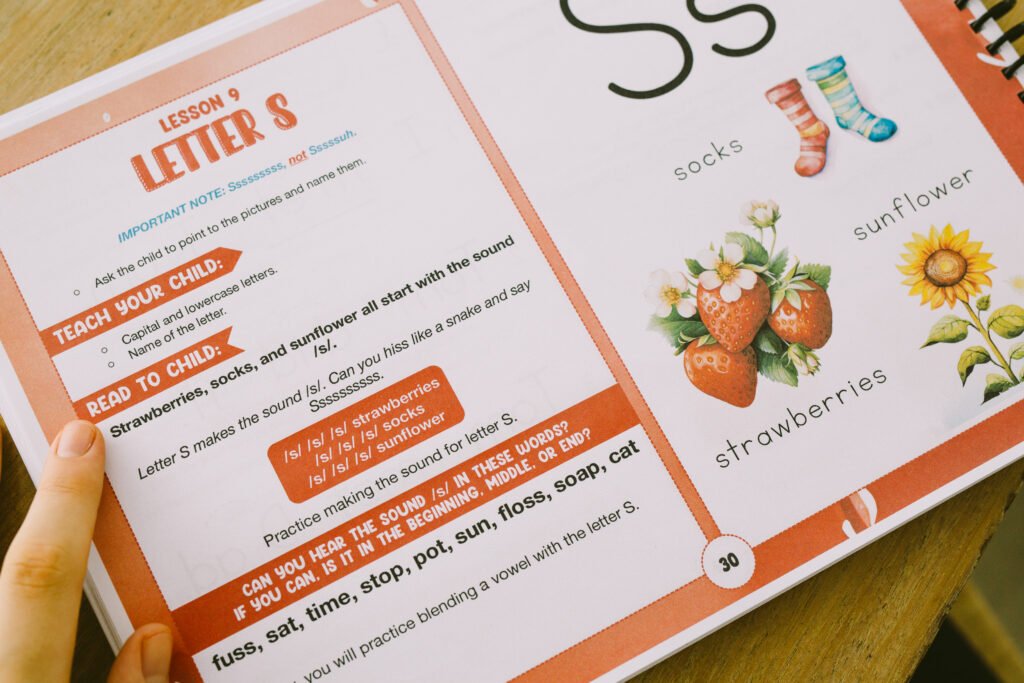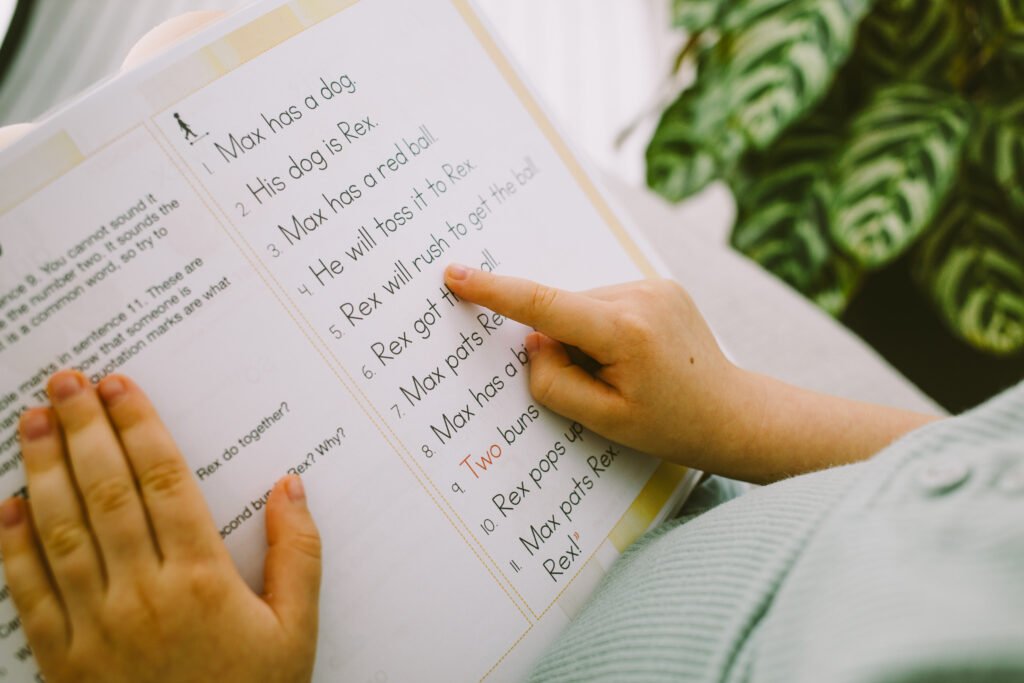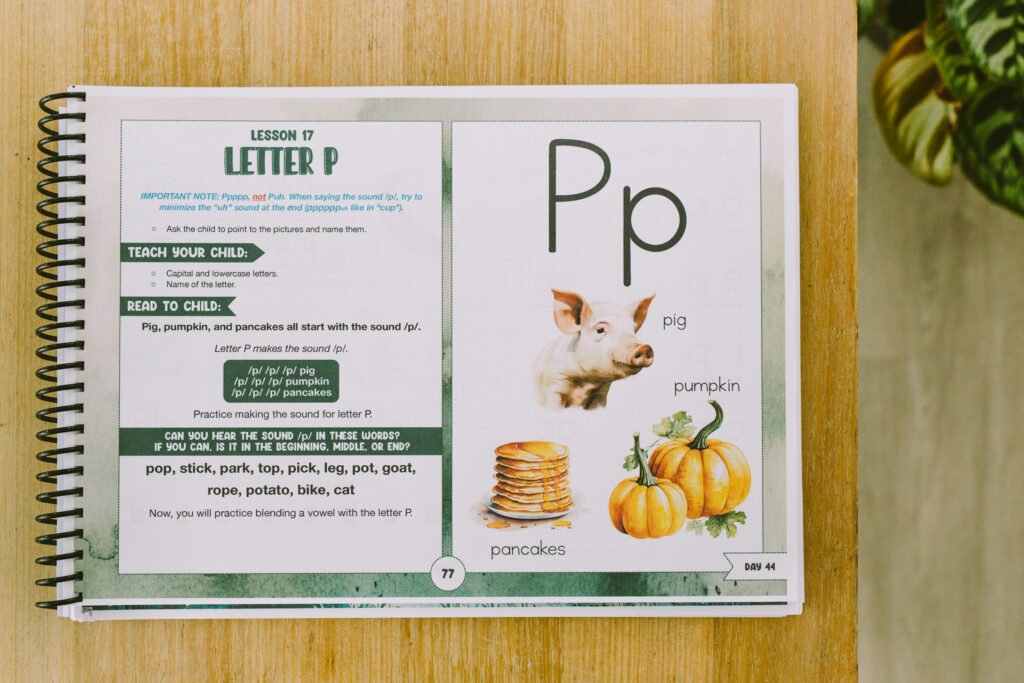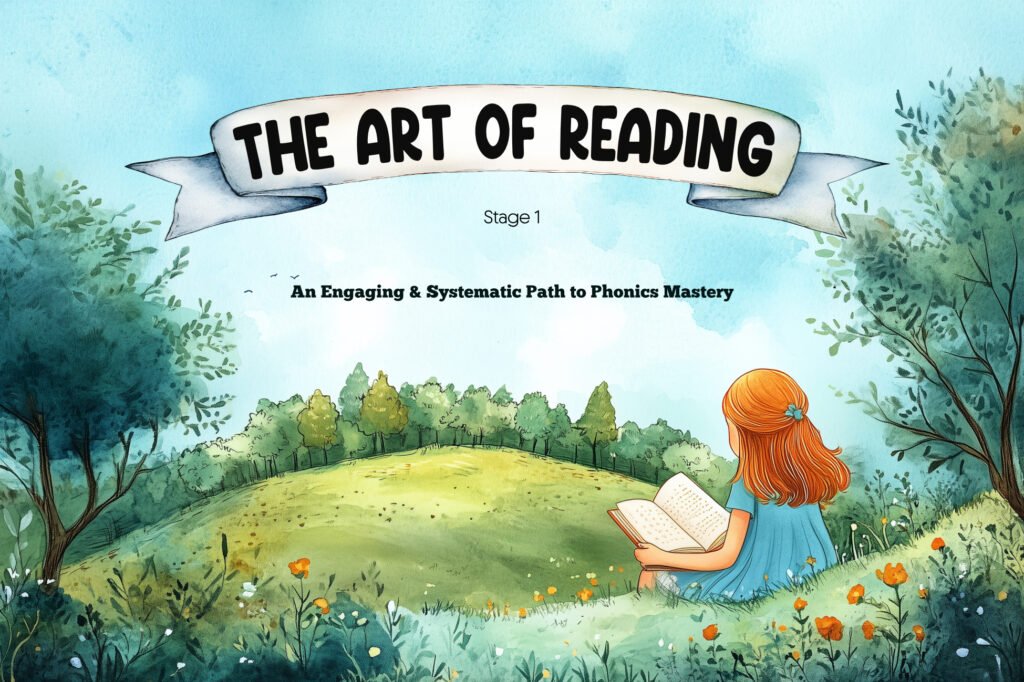LETTERS & Sounds come first
If you’re wondering how to teach phonics, start simple. Teaching your child to read doesn’t need to be complicated, but it does need to be done right. The first step in phonics instruction is straightforward: teach the letters and the sounds they make. Before a child can blend words, they need to know what each letter says.
We’ve created some FREE fun games to help with that. Just grab your alphabet flashcards and download our no-prep activities, designed to help your child connect letters to sounds and build written letter to sound recognition through play.

The SECOND step:
Once you child knows the letters and their sounds, the next step is teaching to blend two letter blends. This is the most critical step of learning to read smoothly. This is the heart of learning to read English, so choosing the right approach matters. Many homeschool phonics programs teach blending inefficiently, starting with methods that don’t reflect how English actually works.
English is built on an open and closed syllable system. Most of the first words children learn to read (like cat, bed, and sit) are closed syllables: short vowels that are followed (or “closed”) by a consonant. But a lot of phonics curriculum begin by blending a consonant with a vowel (ma, me, mi, mo, mu), which works for languages like Spanish. Not so much for English.
This open-syllable (syllables that end in vowel sounds) approach creates awkward, unnatural starting points for beginner readers. They are harder for children to hold and blend fluently when learning to read.
there is an easier method:
A more effective method is to teach blending is to use closed syllables first.
Start with combinations like at, et, and it, which can then naturally become real words like sat, set, and sit.

This feels intuitive to read and leads to faster, more meaningful progress. This is the approach we use in The Art of Reading. It gives children early success and builds confidence from the start.
That said, blending doesn’t happen overnight. It’s a skill that takes time, repetition, and practice. Many parents expect smooth blending within a few weeks, but it often months, and that’s completely normal.
Consistency is key

Lastly, INTRODUCE READERS EARLY
This is how to teach phonics. It really is simple. You don’t need a background in education to teach your child to read. You just need a clear plan, the right materials, and a bit of patience.

